What's the Fastest Car in the World? Exploring the Pinnacle of Automotive Speed

Welcome to the exhilarating world of automotive speed! If you're a curious individual with a thirst for knowledge and a fascination for extraordinary feats of engineering, you're in for a treat. In this article, we dive into the heart-pounding question that has captivated enthusiasts and thrill-seekers alike: What's the fastest car in the world?
Get ready to explore the pinnacle of automotive speed as we unveil the top contenders in this adrenaline-fueled race. From the mind-boggling acceleration to mind-numbing top speeds, we'll delve into the remarkable engineering marvels that have shattered records and pushed the boundaries of what's possible on four wheels.
But it's not just about speed; it's about the relentless pursuit of automotive excellence. We'll uncover the cutting-edge technologies, such as lightweight materials and advanced aerodynamics, that have paved the way for these speed demons. Discover how engine power, performance enhancements, and innovative design elements contribute to creating these lightning-fast machines.
Buckle up as we take you inside the cockpit, providing insights into the driver's perspective and the thrilling experience of harnessing immense power. We'll also explore the intersection of speed and luxury, where high-performance meets comfort and style, making these supercars a dream to behold.
And we won't stop there. We'll give you a glimpse into the future, exploring the emerging trends and technologies that will continue to push the boundaries of speed. From electric revolution to autonomous driving, we'll discuss how these advancements are shaping the future of high-speed performance.
So, get ready to embark on an exhilarating journey through the world of automotive speed. Whether you're an avid car enthusiast or simply captivated by the marvels of human ingenuity, this article is your ticket to uncovering the fastest cars in the world and the remarkable stories behind them. Let's rev the engines and explore the thrilling realm of speed together!
In the late 19th century, the advent of the internal combustion engine marked a pivotal moment in automotive history. The transition from horse-drawn carriages to motorized vehicles brought forth a new era of mobility and speed.
Early pioneers in automotive engineering, such as Karl Benz and Henry Ford, laid the foundation for the mass production of automobiles, making speed accessible to the wider population. The first motorized vehicles may have been modest in their power and speed, but they ignited a spark of curiosity and innovation.
As the 20th century progressed, automotive technology continued to advance rapidly. The introduction of superchargers and turbochargers in the early 1900s allowed engines to generate more power, propelling vehicles to faster speeds.
The quest for speed gained momentum in the mid-20th century. Sports car manufacturers like Ferrari, Porsche, and Jaguar showcased their prowess on the racetracks, pushing the boundaries of what was thought possible in terms of acceleration and top speed.
One of the defining moments in automotive history came with the advent of the muscle car era in the 1960s and 1970s. Vehicles like the Ford Mustang, Chevrolet Camaro, and Dodge Charger became symbols of raw power and speed, captivating enthusiasts with their impressive horsepower.
Advancements in aerodynamics played a pivotal role in enhancing speed. Sleek designs, wind tunnels, and the integration of spoilers and diffusers helped to reduce drag and improve stability, enabling vehicles to slice through the air with minimal resistance.
The turn of the 21st century brought us into the era of hypercars and supercars. Manufacturers like Bugatti, Koenigsegg, and Hennessey unleashed engineering marvels with mind-boggling horsepower figures and top speeds that surpassed any previous records.
Curiosity fact: Did you know that the Bugatti Chiron Super Sport 300+ set a world record for the fastest production car with a top speed of over 300 mph? It exemplifies the relentless pursuit of speed and showcases the remarkable capabilities of modern automotive engineering.
Today, cutting-edge technologies such as hybrid powertrains, electric propulsion, and advanced computer systems continue to push the boundaries of speed. The future holds exciting possibilities, where speed and sustainability converge, shaping the next generation of high-performance vehicles.

One of the most significant advancements is in engine technology. Engineers have developed more efficient and powerful engines capable of generating immense horsepower. Turbocharging and supercharging systems, combined with advanced fuel injection and engine management systems, have significantly improved acceleration and overall performance.
Additionally, lightweight materials have revolutionized automotive design. High-strength carbon fiber composites, aluminum alloys, and other lightweight materials have replaced traditional steel components, reducing the overall weight of vehicles without compromising structural integrity. This weight reduction enhances acceleration, handling, and fuel efficiency.
Aerodynamics also play a crucial role in achieving higher speeds. Streamlined body shapes, active aerodynamic elements, and underbody airflow management contribute to reducing drag and improving stability at high speeds. These advancements allow cars to cut through the air with minimal resistance, optimizing their performance.
Suspension systems have also seen significant advancements, enabling better control and stability at high speeds. Adjustable suspensions, advanced damping technologies, and aerodynamic enhancements work together to ensure optimal handling and grip, even under extreme driving conditions.
The integration of advanced electronic systems has transformed the driving experience. Electronic stability control, traction control, and launch control systems help drivers maintain control and maximize acceleration, especially during high-speed maneuvers. Furthermore, advanced driver-assistance systems (ADAS) contribute to improved safety and performance by providing real-time feedback and assistance to drivers.
To highlight the advancements in automotive engineering, here's a table summarizing key technologies and their impact:
| Advancement | Impact |
|---|---|
| High-performance engines | Increased horsepower and acceleration |
| Lightweight materials | Improved speed, handling, and fuel efficiency |
| Aerodynamic enhancements | Reduced drag and enhanced stability |
| Advanced suspension systems | Optimal control and stability at high speeds |
| Electronic systems | Enhanced driver control and safety |
These remarkable advancements in automotive engineering have revolutionized the world of fast cars, allowing manufacturers to push the boundaries of speed and performance. With each new innovation, the pursuit of automotive excellence continues, making the quest for the fastest car an ever-evolving journey.
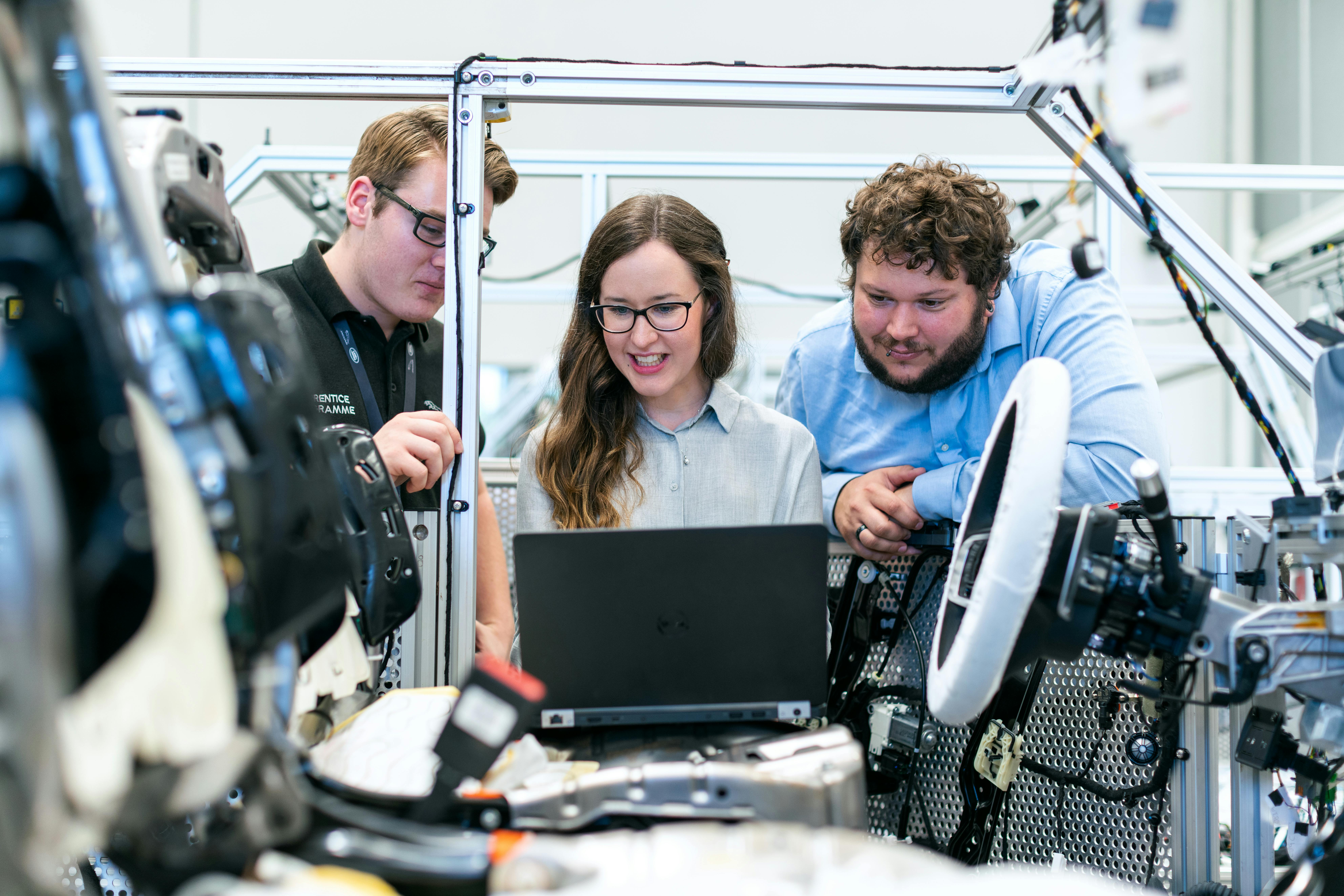
Curiosity fact: Did you know that reducing drag by just 10% can result in a 5% improvement in fuel efficiency? The principles behind aerodynamics not only impact speed but also contribute to overall efficiency and performance.
One key aspect of aerodynamics is reducing drag. Drag is the resistance encountered by a moving vehicle as it pushes against the air. By streamlining the vehicle's shape and minimizing frontal area, engineers can minimize drag and improve efficiency.
The use of sleek and contoured body designs helps the air flow smoothly over the vehicle, reducing turbulence and pressure differences. This enables the car to slice through the air with minimal resistance, allowing for higher top speeds.
Another important aspect is managing airflow. Engineers strategically design air intakes, vents, and spoilers to control the flow of air around the vehicle. This ensures proper cooling, reduces lift, and improves downforce, enhancing stability and traction at high speeds.
Advanced aerodynamic features, such as active spoilers and adaptive air ducts, dynamically adjust the vehicle's aerodynamic properties based on driving conditions. These intelligent systems optimize downforce, drag, and cooling to achieve the best performance in different situations.
The importance of aerodynamics becomes even more evident in motorsports, where every fraction of a second counts. Race cars, like Formula 1 vehicles, are meticulously designed to generate high levels of downforce, allowing them to maintain grip and stability through corners at incredible speeds.
Automakers and engineers continue to explore new frontiers in aerodynamics, employing advanced simulation tools, wind tunnel testing, and computational fluid dynamics (CFD) to refine their designs. The pursuit of speed drives innovations in active aerodynamics, such as movable wings and adjustable spoilers, to adapt to varying driving conditions.
As technology continues to advance, the integration of aerodynamics with other systems, such as electric powertrains, presents new opportunities. Electric vehicles benefit from reduced aerodynamic noise and improved efficiency, contributing to their growing presence in the high-performance segment.
Understanding and harnessing the power of aerodynamics has allowed automotive engineers to push the limits of speed and performance. It is a field where science meets art, where every curve and contour serves a purpose, ultimately allowing these fast machines to defy the forces of nature and deliver an exhilarating experience.

Curiosity fact: Did you know that the Bugatti Chiron Super Sport 300+ set a Guinness World Record for being the first production car to exceed a top speed of 300 miles per hour (482.80 kilometers per hour)? It represents the pinnacle of automotive achievement and showcases Bugatti's commitment to pushing the boundaries of speed.
The Chiron Super Sport 300+ is powered by a monstrous 8.0-liter quad-turbocharged W16 engine, delivering a mind-blowing 1,578 horsepower. This immense power allows the Chiron to accelerate from 0 to 60 mph in just under 2.4 seconds, providing an unparalleled adrenaline rush.
To achieve its incredible top speed, the Chiron Super Sport 300+ underwent significant aerodynamic enhancements. It features a sleek and elongated body design, optimized for reduced drag and improved stability at high speeds. Advanced airflow management systems and aerodynamic elements contribute to keeping the car firmly planted on the ground.
Production of the Chiron Super Sport 300+ was limited to only 30 units, making it an exclusive and highly sought-after hypercar. Each vehicle is meticulously handcrafted with exceptional attention to detail, embodying the pinnacle of luxury and performance.
While the Chiron Super Sport 300+ is undoubtedly an engineering masterpiece, it is worth noting that its top speed is electronically limited to 273.4 mph (440 km/h) for safety reasons. The record-breaking top speed achieved during the official record run was made under controlled conditions on a test track.
The Bugatti Chiron Super Sport 300+ stands as a testament to the relentless pursuit of automotive excellence. It represents the pinnacle of speed, power, and craftsmanship, capturing the imaginations of car enthusiasts worldwide.
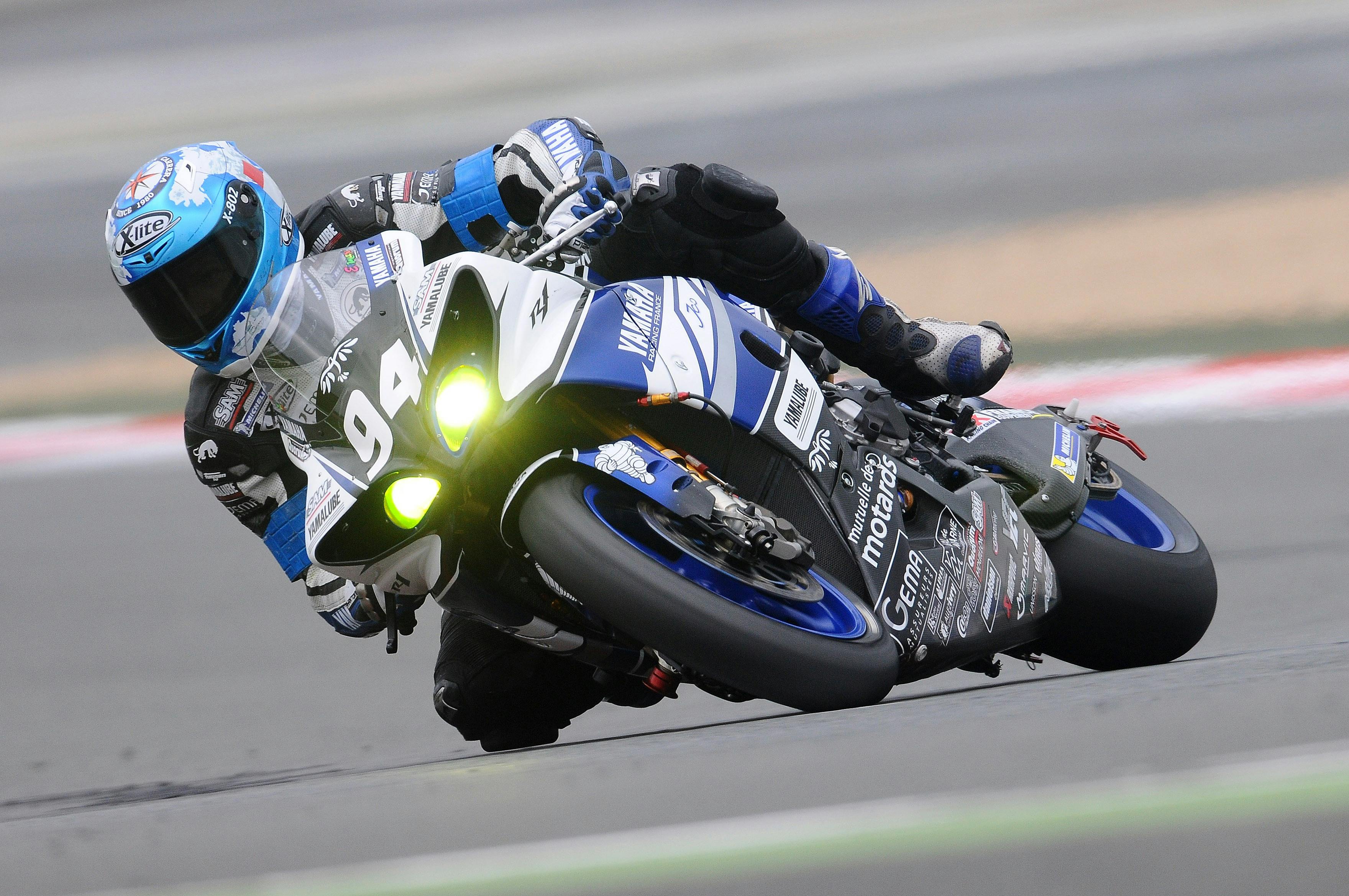
The Jesko Absolut is engineered to be the fastest Koenigsegg ever created, optimized for achieving remarkable top speeds. Its aerodynamic design, advanced engineering, and relentless pursuit of efficiency make it a force to be reckoned with.
Curiosity fact: Did you know that the Jesko Absolut aims to surpass the Bugatti Chiron Super Sport 300+'s record and become the fastest production car in the world? It's designed with a singular focus on speed, employing cutting-edge technologies and innovative engineering to maximize its performance.
Underneath its sleek exterior lies a powerhouse: a twin-turbocharged 5.0-liter V8 engine generating an astounding 1,600 horsepower. This immense power propels the Jesko Absolut from 0 to 60 mph in mere seconds, delivering an adrenaline rush like no other.
To achieve its exceptional speed, the Jesko Absolut features an aerodynamic design that minimizes drag and maximizes downforce. The car's exterior lines and active aerodynamic elements work in harmony to optimize airflow and provide unparalleled stability at high speeds.
The Jesko Absolut embraces advanced materials, utilizing carbon fiber extensively to reduce weight while maintaining strength and rigidity. This lightweight construction allows for incredible acceleration and nimble handling, setting new benchmarks in the hypercar realm.
It's important to note that the Jesko Absolut's top speed has yet to be officially verified, as it aims to surpass previous records. However, based on extensive simulations and engineering expertise, Koenigsegg estimates that it has the potential to reach speeds exceeding 300 mph (483 km/h).
The Koenigsegg Jesko Absolut embodies the relentless pursuit of speed and innovation. With its stunning design, exceptional power, and uncompromising focus on aerodynamics, it stands as a testament to Koenigsegg's commitment to pushing the boundaries of automotive performance.

Curiosity fact: Did you know that the Hennessey Venom F5 aims to become the first production car to break the 300 mph (483 km/h) barrier? It represents Hennessey's relentless pursuit of speed and the culmination of years of engineering expertise.
At the heart of the Venom F5 lies a mighty 6.6-liter twin-turbocharged V8 engine that generates an astonishing 1,817 horsepower. This exceptional power-to-weight ratio propels the Venom F5 to incredible speeds, delivering an adrenaline-fueled driving experience like no other.
The Venom F5's lightweight carbon fiber construction and aerodynamic design contribute to its exceptional performance. It features an aggressive and streamlined body, meticulously sculpted to minimize drag and optimize downforce, keeping the car planted firmly on the road.
With extensive wind tunnel testing and engineering simulations, Hennessey has designed the Venom F5 to excel in all aspects of aerodynamics. Active aerodynamic elements, including an adjustable rear wing, work harmoniously to enhance stability, cornering, and overall performance.
The Venom F5's advanced powertrain, lightweight design, and aerodynamic prowess enable it to achieve mind-blowing acceleration. It can sprint from 0 to 60 mph in under 2 seconds, placing it among the fastest-accelerating production cars in the world.
It's important to note that the Venom F5's top speed is yet to be officially verified. However, Hennessey estimates that it has the potential to exceed 311 mph (500 km/h), putting it in an elite category of hypercars.
The Hennessey Venom F5 represents the pinnacle of Hennessey's engineering prowess and unwavering commitment to pushing the boundaries of speed. It stands as a testament to the relentless pursuit of automotive excellence, delivering a thrilling combination of power, aerodynamics, and unrivaled performance.

The Tuatara gained worldwide attention when it claimed the title of the fastest production car, surpassing the previous record held by the Bugatti Veyron Super Sport. With its remarkable performance, the Tuatara has firmly established itself as a force to be reckoned with in the realm of speed.
Curiosity fact: Did you know that the Tuatara set a new production car speed record with a verified top speed of 282.9 mph (455.3 km/h)? It exemplifies the incredible engineering and performance capabilities of this exceptional hypercar.
Powering the Tuatara is a ferocious 5.9-liter twin-turbocharged V8 engine that produces an astounding 1,750 horsepower. This immense power, combined with its lightweight construction, allows the Tuatara to achieve mind-boggling acceleration and extraordinary top speeds.
Designed with aerodynamics in mind, the Tuatara features sleek lines and advanced airflow management systems that minimize drag and maximize downforce. These aerodynamic enhancements contribute to its exceptional stability, allowing it to slice through the air with minimal resistance.
With its exceptional power and aerodynamic design, the Tuatara delivers exhilarating performance. It can accelerate from 0 to 60 mph in just under 2.5 seconds, showcasing its incredible power-to-weight ratio and lightning-fast acceleration.
The Tuatara's record-breaking top speed was achieved under controlled conditions on a closed road in Nevada. The rigorous testing and verification process ensure that the car's capabilities are accurately measured and validated.
The SSC Tuatara stands as a testament to the relentless pursuit of speed and performance. Its groundbreaking engineering, astonishing power, and aerodynamic prowess make it a true icon in the world of hypercars, capturing the imaginations of automotive enthusiasts worldwide.

Curiosity fact: Did you know that the Rimac C_Two accelerates from 0 to 60 mph in a mind-boggling 1.85 seconds? It exemplifies the remarkable capabilities of electric power and showcases Rimac's commitment to redefining performance in the world of hypercars.
The C_Two features an advanced electric powertrain that delivers exceptional performance. With four electric motors, one for each wheel, and a combined power output of 1,914 horsepower, it provides instantaneous acceleration and unrivaled responsiveness.
With a top speed of 258 mph (415 km/h), the C_Two boasts remarkable speed and agility. Its cutting-edge battery technology enables it to sustain high performance over extended periods, making it suitable for both exhilarating sprints and long-distance driving.
Designed with aerodynamics in mind, the C_Two's sleek and futuristic bodywork minimizes drag and maximizes efficiency. Active aerodynamic elements, such as adjustable spoilers and air ducts, contribute to improved stability and downforce, enhancing its performance on the road or track.
One of the standout features of the C_Two is its advanced autonomous driving capabilities. Equipped with an array of sensors and state-of-the-art technology, it offers a range of driver-assistance features, providing both thrilling performance and enhanced safety.
The Rimac C_Two's innovative features and groundbreaking performance have garnered widespread acclaim, establishing Rimac as a leader in the realm of electric hypercars. It represents a glimpse into the future of high-performance automobiles, where electric power and cutting-edge technology converge to deliver unparalleled driving experiences.

With its sleek and aggressive design, the Valkyrie captures attention wherever it goes. Its aerodynamic bodywork, developed in collaboration with Red Bull Advanced Technologies, is a testament to the pursuit of speed and performance.
Curiosity fact: Did you know that the Aston Martin Valkyrie's V12 engine, developed by Cosworth, is capable of producing over 1,000 horsepower? This immense power propels the Valkyrie to astounding speeds, providing an unforgettable driving experience.
The Valkyrie's lightweight construction utilizes advanced materials such as carbon fiber, enabling it to achieve exceptional power-to-weight ratio. This remarkable balance contributes to exhilarating acceleration and nimble handling, elevating the driving dynamics to new heights.
The Valkyrie's aerodynamics have been meticulously refined to optimize downforce and minimize drag. The integration of active aerodynamic elements, such as the deployable rear wing, ensures optimal stability and cornering performance at high speeds.
Collaboration with renowned Formula 1 team Red Bull Racing has led to groundbreaking advancements in aerodynamics and performance. The Valkyrie benefits from cutting-edge technologies and expertise honed in the world of motorsports.
The interior of the Valkyrie is a testament to Aston Martin's commitment to luxury and precision. Every detail is crafted to provide a driver-focused experience, immersing you in the thrill of high-performance driving.
The Aston Martin Valkyrie represents the pinnacle of automotive excellence, combining breathtaking design, awe-inspiring power, and meticulous engineering. It stands as a symbol of Aston Martin's unwavering dedication to pushing the boundaries of what's possible in the pursuit of automotive perfection.
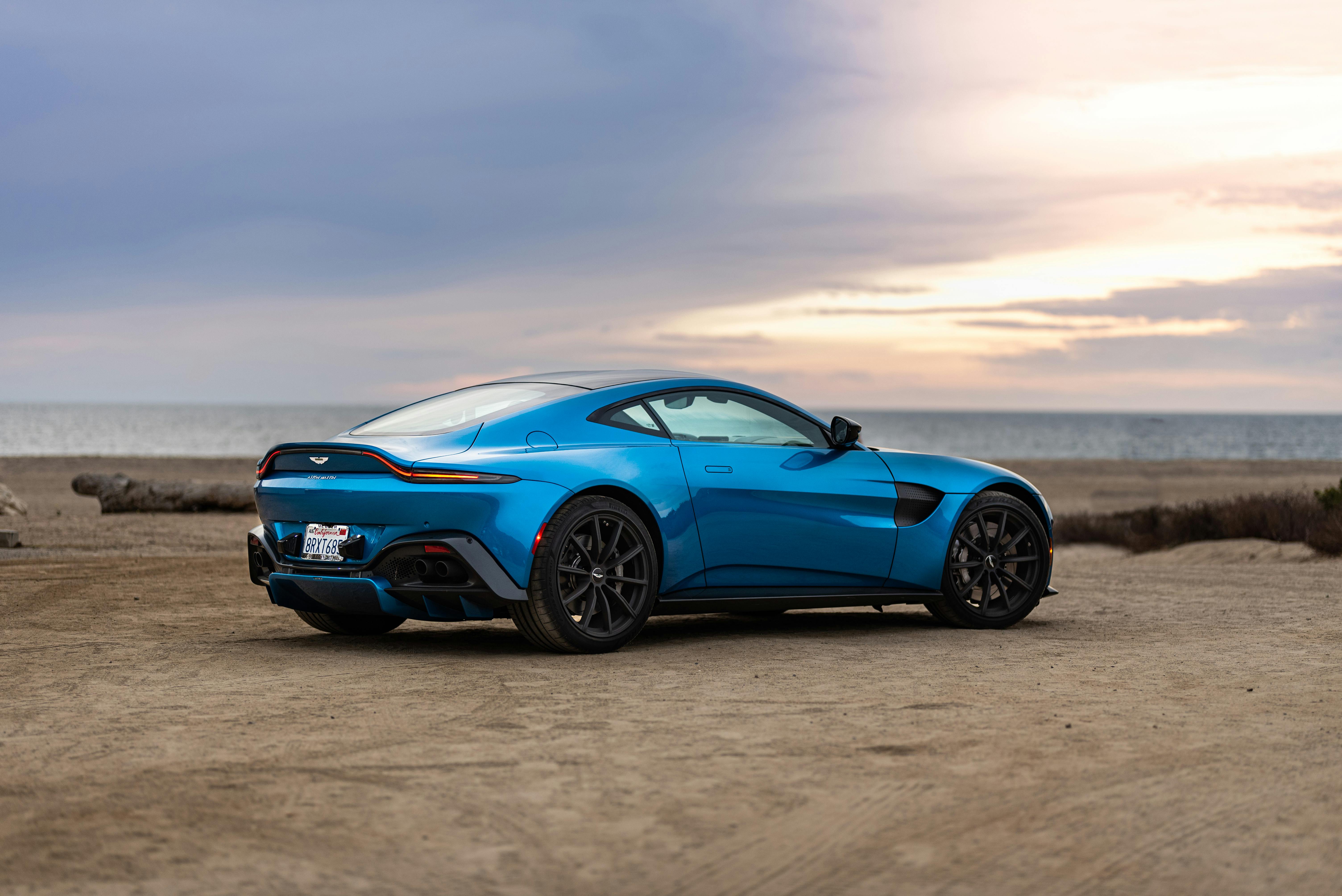
Curiosity fact: Did you know that the Ferrari SF90 Stradale is the most powerful production car ever created by Ferrari? Its innovative hybrid powertrain delivers a mind-boggling total power output of 986 horsepower, making it a true force to be reckoned with.
The SF90 Stradale features a twin-turbocharged V8 engine paired with three electric motors. This advanced hybrid system not only enhances performance but also enables all-electric driving for short distances, offering a glimpse into a greener future for high-performance automobiles.
With its exceptional power and electrifying acceleration, the SF90 Stradale can sprint from 0 to 60 mph in just 2.5 seconds, showcasing its incredible performance capabilities. It seamlessly combines the responsiveness of an internal combustion engine with the instant torque provided by electric motors.
The SF90 Stradale incorporates advanced aerodynamic features and active systems to optimize airflow and stability. Its sleek and sculpted bodywork not only exudes Italian elegance but also enhances performance by reducing drag and increasing downforce.
The interior of the SF90 Stradale is a blend of luxury and cutting-edge technology. It features a driver-centric cockpit with digital displays and intuitive controls, ensuring an immersive and engaging driving experience.
The SF90 Stradale represents a significant step forward for Ferrari, showcasing their commitment to innovation and sustainability. It combines the iconic performance and emotion of a Ferrari with the efficiency and versatility of hybrid technology, setting a new standard in the realm of hybrid hypercars.
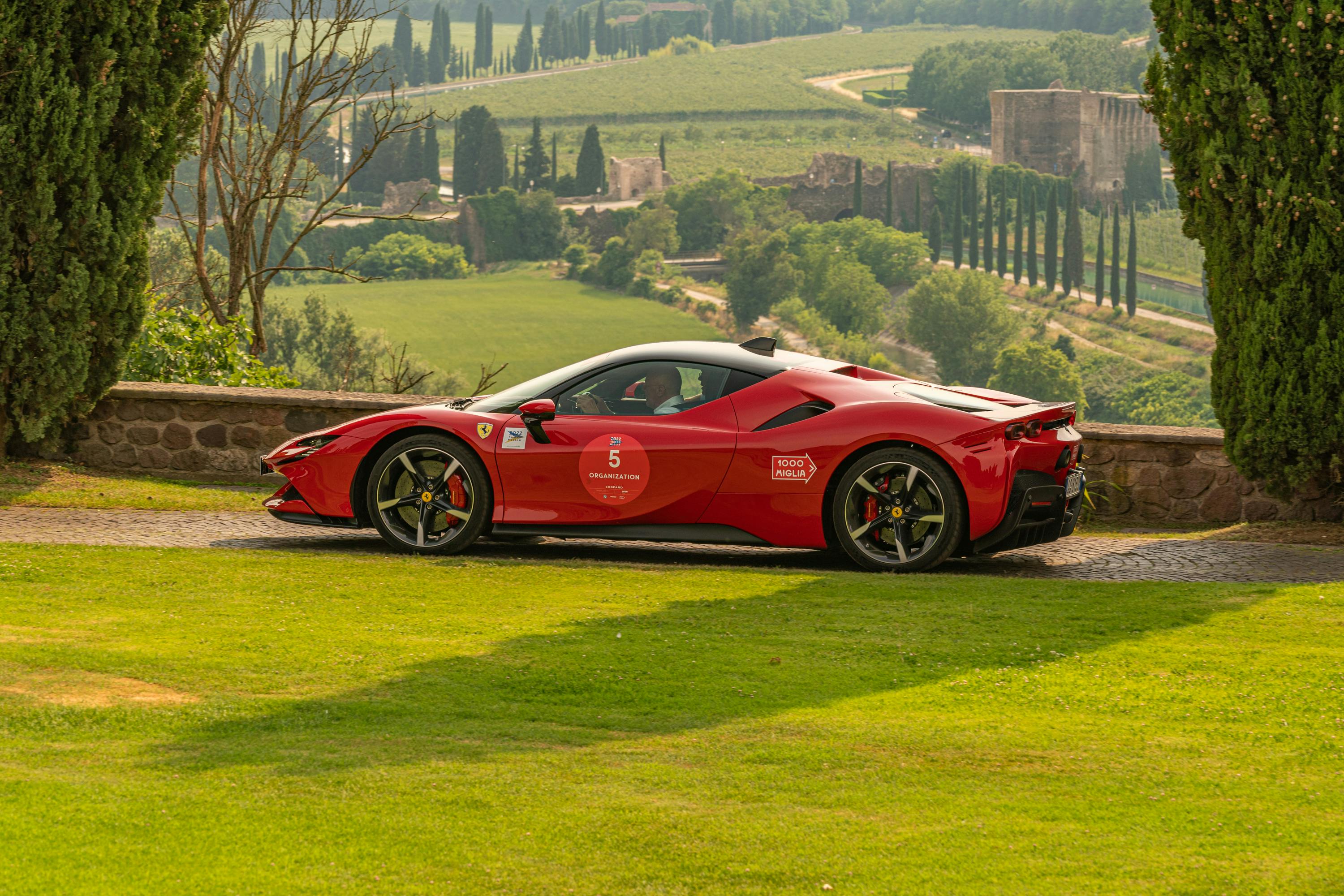
Curiosity fact: Did you know that the Porsche 911 GT2 RS held the title of the fastest production car on the Nürburgring Nordschleife track for several years? It's a testament to the exceptional performance capabilities of this legendary sports car.
The GT2 RS is powered by a twin-turbocharged 3.8-liter flat-six engine that generates an impressive 700 horsepower. This immense power, combined with precise engineering and aerodynamic enhancements, allows the GT2 RS to achieve mind-bending acceleration and blistering top speeds.
With its rear-wheel-drive layout and lightweight construction, the GT2 RS delivers exceptional handling and agility. It seamlessly combines power and precision, providing an engaging and thrilling driving experience on both road and track.
Designed with aerodynamics in mind, the GT2 RS features a distinctive and aggressive bodywork that optimizes airflow and downforce. Its rear wing and aerodynamic elements contribute to increased stability at high speeds, allowing you to push the limits with confidence.
The GT2 RS's performance is complemented by a driver-focused interior, featuring sport seats, a race-inspired steering wheel, and advanced infotainment systems. It strikes the perfect balance between comfort and functionality, ensuring an immersive driving experience.
The Porsche 911 GT2 RS stands as a testament to Porsche's unwavering commitment to performance and engineering excellence. With its remarkable power, precise handling, and iconic design, it has earned its place as one of the most revered sports cars in automotive history.

Curiosity fact: Did you know that the McLaren Speedtail holds the title of the fastest McLaren ever produced, with a verified top speed of 250 mph (402 km/h)? It's a testament to the exceptional capabilities and aerodynamic prowess of this remarkable hypercar.
The Speedtail features a hybrid powertrain that combines a twin-turbocharged V8 engine with an electric motor, delivering a combined power output of 1,055 horsepower. This immense power propels the Speedtail to breathtaking speeds, providing an unrivaled driving experience.
Designed with aerodynamics in mind, the Speedtail boasts a sleek and futuristic bodywork that minimizes drag and maximizes efficiency. Its long and flowing lines, along with innovative aerodynamic elements, contribute to enhanced stability and performance at high speeds.
The Speedtail's unique seating arrangement, with a central driving position and two passenger seats positioned slightly behind, creates a truly immersive and engaging driving experience. It embodies McLaren's commitment to placing the driver at the center of the action.
With its lightweight construction and advanced materials such as carbon fiber, the Speedtail achieves an exceptional power-to-weight ratio. This, combined with its advanced aerodynamics and hybrid powertrain, enables lightning-fast acceleration and exhilarating performance.
The McLaren Speedtail represents the ultimate fusion of art and technology, pushing the boundaries of what is possible in the realm of hypercars. With its stunning design, jaw-dropping performance, and relentless pursuit of speed, it stands as a true masterpiece in the world of automotive engineering.
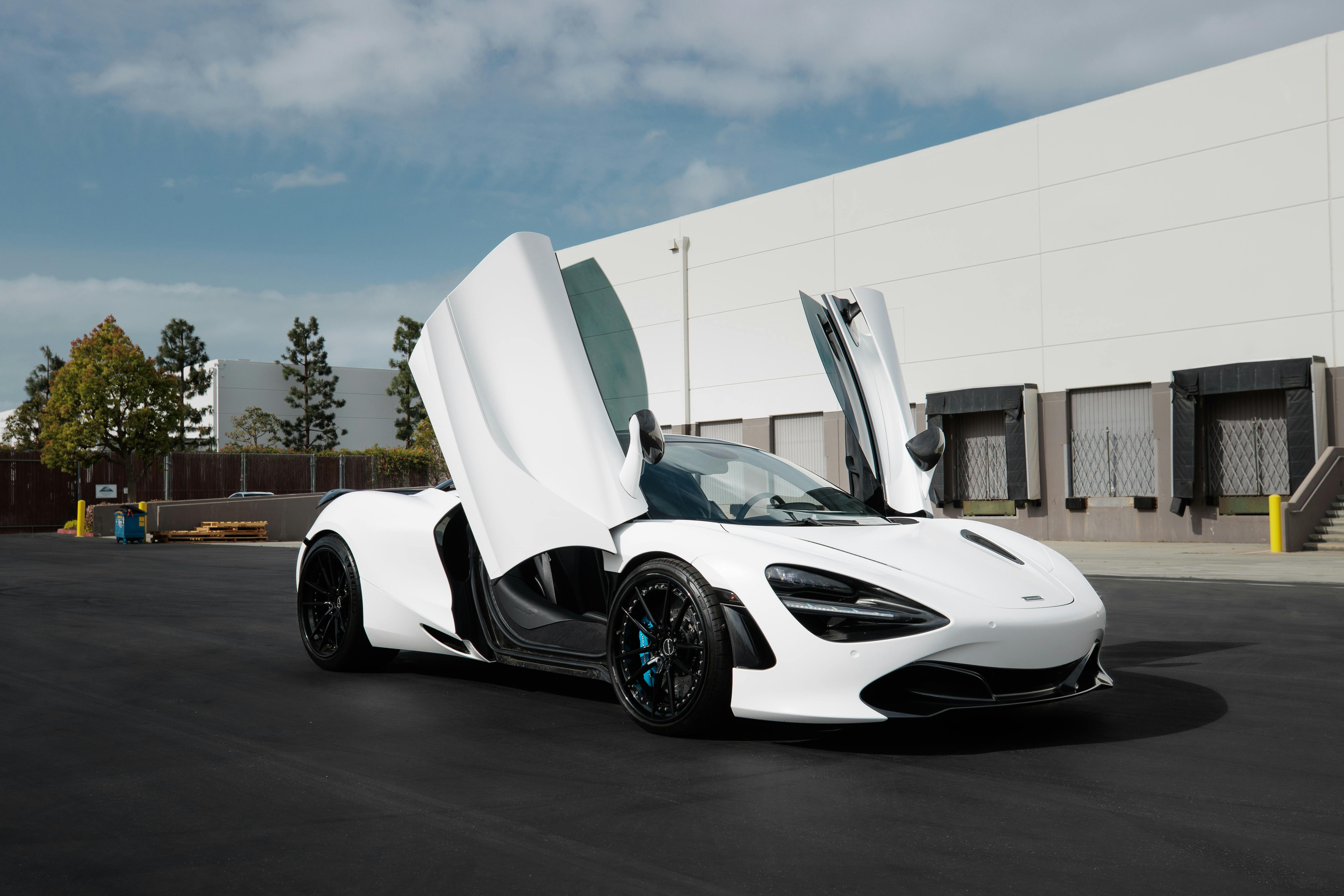
Curiosity fact: Did you know that the Lamborghini Aventador SVJ holds the lap record for production cars at the Nürburgring Nordschleife? It completed the 12.8-mile circuit in a blistering time of 6 minutes and 44.97 seconds, showcasing its exceptional performance capabilities.
Powering the Aventador SVJ is a mighty 6.5-liter V12 engine that unleashes a staggering 759 horsepower. This immense power, combined with its lightweight construction and advanced aerodynamics, propels the SVJ to incredible speeds and exhilarating acceleration.
The SVJ's aerodynamic design is optimized for maximum performance and downforce. It features active aerodynamic elements, including an adjustable rear wing and front flaps, which enhance stability and cornering capabilities, keeping the car planted firmly on the road.
With a top speed of over 217 mph (350 km/h), the Aventador SVJ is a true powerhouse on the open road. Its aggressive and sculpted bodywork not only exudes Lamborghini's signature style but also contributes to improved aerodynamics and increased performance.
The interior of the SVJ is a blend of luxury and sportiness, featuring premium materials and cutting-edge technology. It immerses you in a driver-centric environment, where every control and surface is designed with precision and attention to detail.
The Lamborghini Aventador SVJ represents the pinnacle of Lamborghini's performance and engineering excellence. With its awe-inspiring power, striking design, and uncompromising performance, it has earned its place among the most coveted supercars in the world.

Curiosity fact: Did you know that the current land speed record for a production car is held by the SSC Tuatara, which achieved an astonishing top speed of 282.9 mph (455.3 km/h)? This remarkable feat highlights the incredible engineering and raw power that propel these speed demons to unparalleled velocities.
The pursuit of land speed records has always captivated automotive enthusiasts. These record-breaking machines are not only a testament to engineering prowess but also a showcase of human determination and innovation.
One iconic name in the land speed record history is the Thrust SSC, which became the first car to break the sound barrier on land, reaching a staggering speed of 763.035 mph (1,227.986 km/h). This achievement in 1997 pushed the limits of what was previously thought possible.
Another notable record holder is the Bloodhound LSR, which aims to break the 1,000 mph (1,609 km/h) barrier. This ambitious project combines jet and rocket propulsion to achieve unprecedented speeds, showcasing the cutting-edge technology employed in the pursuit of speed.
Land speed records are not limited to four-wheeled vehicles. The two-wheeled world also has its share of speed pioneers. One such example is the Ack Attack, a streamlined motorcycle that set the current land speed record for motorcycles at 376.363 mph (605.697 km/h).
These speed demons serve as a constant reminder that human ingenuity knows no bounds. They inspire us to dream big, push the limits, and challenge what's possible. As technology advances and new records are set, we can only imagine what the future holds for the world of land speed records.

Curiosity fact: Did you know that the current record for the fastest car in the world is held by the SSC Tuatara, reaching a mind-boggling top speed of 282.9 mph (455.3 km/h)? This achievement showcases the relentless pursuit of speed and the remarkable engineering feats that make it possible.
The quest for the highest top speed has led to groundbreaking advancements in aerodynamics, engine technology, and materials. Automakers and engineers constantly strive to develop innovative solutions to maximize performance and overcome the limitations of physics.
One key factor in achieving high speeds is reducing aerodynamic drag. Streamlined bodywork, active aerodynamic elements, and wind tunnel testing play a crucial role in optimizing airflow and minimizing resistance, allowing these speed machines to slice through the air with minimal hindrance.
Power is another vital component in the pursuit of speed. These high-performance vehicles harness the power of advanced engines, often with turbocharging or supercharging technology, to deliver exceptional horsepower and torque. The combination of power and aerodynamics propels them to astonishing velocities.
Engineering precision is paramount when striving for high speeds. Meticulous attention to detail, advanced suspension systems, and specialized tires ensure stability, traction, and control at blistering speeds, providing drivers with the confidence to push the limits.
While top speed is an impressive feat, it's also essential to consider the overall performance characteristics of these vehicles. Acceleration, handling, and braking capabilities work in harmony to create a well-rounded driving experience, making these speed machines a true marvel of automotive engineering.
The quest for the highest top speed is an ongoing endeavor, with manufacturers continuously pushing boundaries and raising the bar. As technology advances and new records are set, we eagerly anticipate what the future holds for the world of automotive speed and the extraordinary machines that will continue to captivate our imaginations.

Curiosity fact: Did you know that the current record for the fastest 0-60 mph (0-97 km/h) acceleration time is held by the Rimac C_Two, which achieves this feat in an astonishing 1.85 seconds? It's a testament to the remarkable power and instant torque delivery of electric drivetrains.
When it comes to acceleration, the equation is simple: more power, less weight. These high-performance vehicles pack a punch under the hood, with turbocharged engines, hybrid powertrains, or electric motors delivering jaw-dropping horsepower and torque.
Instantaneous acceleration from a standstill to highway speeds is a thrill that pushes the limits of human perception. As your foot meets the pedal, the world blurs around you, and G-forces pin you back into your seat. It's an adrenaline rush like no other.
Acceleration times vary across different performance cars, with some achieving 0-60 mph in under 3 seconds, while others take a fraction longer. But regardless of the specific numbers, the sensation of rapid acceleration is a visceral experience that ignites your senses.
It's worth noting that acceleration is not just about raw speed; it's about the overall driving experience. Responsiveness, throttle control, and traction play a crucial role in translating power into forward motion, ensuring a smooth and exhilarating acceleration that leaves you craving for more.
Whether you're pushing the limits on a race track or simply experiencing the thrill on your favorite winding road, the acceleration capabilities of these performance machines will leave you with a newfound appreciation for the engineering marvels that deliver heart-pounding speed and acceleration.

Curiosity fact: Did you know that the Bugatti Chiron Super Sport 300+ boasts a mind-blowing 1,578 horsepower? This extraordinary power output, achieved through advanced engineering and meticulous tuning, propels it to incredible speeds that defy imagination.
The engines of these high-performance vehicles are marvels of engineering, combining power, efficiency, and reliability. Whether it's a V8, V10, V12, or an electric motor, these powerplants are optimized to deliver exceptional performance and heart-stopping acceleration.
Automakers continuously refine and innovate engine technologies to extract every ounce of power while ensuring durability and efficiency. Turbocharging, supercharging, direct fuel injection, and hybrid systems are just a few examples of the advancements that contribute to jaw-dropping performance.
Engine performance enhancements go beyond raw power. Advanced electronic control systems, precise fuel delivery, and intelligent power management optimize the driving experience, allowing for seamless power delivery and enhanced responsiveness.
The pursuit of performance is a never-ending journey, with automakers constantly pushing the limits of what's possible. From track-inspired technologies to innovations derived from motorsport, these advancements trickle down to production vehicles, making driving a thrilling experience for enthusiasts.
As automotive technology continues to evolve, we can only imagine what the future holds for engine power and performance enhancements. With each new generation of high-performance vehicles, the boundaries of speed and excitement are redefined, ensuring that driving enthusiasts will always have something to look forward to.

Curiosity fact: Did you know that the McLaren Speedtail features a carbon fiber monocoque chassis that provides exceptional strength and rigidity while keeping weight to a minimum? This lightweight construction allows it to achieve remarkable speeds and agility.
When it comes to speed, every gram matters. Automakers utilize advanced lightweight materials to reduce the overall weight of the vehicle, enhancing performance, handling, and fuel efficiency. Carbon fiber, aluminum alloys, titanium, and magnesium are among the materials of choice.
Carbon fiber, in particular, is widely used due to its impressive strength-to-weight ratio. This composite material consists of woven carbon fibers infused with resin, resulting in a lightweight and incredibly strong structure. It's commonly used in body panels, chassis components, and even in the construction of monocoque structures.
Lightweight materials not only contribute to improved performance but also play a vital role in achieving optimal weight distribution. By reducing the weight of certain components, automakers can redistribute mass to enhance stability, cornering capabilities, and overall driving dynamics.
Table: Comparing Lightweight Materials
Material Advantages Carbon Fiber High strength-to-weight ratio, excellent rigidity Aluminum Alloys Lightweight, good corrosion resistance Titanium High strength, low density Magnesium Lightweight, good stiffness
By embracing lightweight materials, automakers strive to strike a delicate balance between weight reduction and maintaining safety standards. Extensive research, engineering expertise, and advanced manufacturing techniques ensure that these materials meet the stringent requirements of high-performance vehicles.
The use of lightweight materials in high-performance vehicles is a testament to the relentless pursuit of speed and performance. As technology continues to evolve, we can expect further advancements in materials science, enabling even greater achievements in the quest for speed.

Curiosity fact: Did you know that the SSC Tuatara holds the title for the fastest production car with an astonishing top speed of 282.9 mph (455.3 km/h)? Its sleek and aerodynamically optimized design allows it to slice through the air with minimal drag, unlocking its incredible speed potential.
Aerodynamics is the study of how air flows around an object and the forces it generates. By shaping the exterior of a vehicle to minimize air resistance, engineers can reduce drag and enhance stability, allowing the car to cut through the air with minimal turbulence.
Streamlined bodywork, sleek curves, and carefully sculpted surfaces are all elements of aerodynamic design. These features help manage airflow, reduce turbulence, and increase downforce to keep the vehicle firmly planted on the road, even at high speeds.
Advanced aerodynamic features such as front splitters, rear spoilers, diffusers, and active aerodynamics dynamically manipulate airflow to optimize performance. These technologies adjust to varying driving conditions, providing the right balance of downforce and reduced drag for optimal speed and stability.
Quote: "The pursuit of speed is not just about horsepower; it's about harnessing the power of the wind. Aerodynamics is the invisible force that propels these machines into the realm of pure exhilaration, enabling them to conquer the limits of speed."
Automakers employ wind tunnel testing and computational fluid dynamics simulations to refine their designs and achieve the most efficient aerodynamic profiles. Every curve, every angle, and every surface is carefully crafted to minimize resistance and maximize performance.
By harnessing the principles of aerodynamics, high-performance vehicles can achieve extraordinary speeds while maintaining stability and control. It's a delicate balance between minimizing drag and generating downforce, resulting in a thrilling and confidence-inspiring driving experience.
As technology continues to advance, we can expect further innovations in aerodynamics, pushing the boundaries of what's possible in the pursuit of speed. The quest for streamlined perfection is a never-ending journey, driven by the desire to unlock new levels of automotive performance.

Curiosity fact: Did you know that the acceleration of the Bugatti Chiron from 0 to 60 mph (0 to 97 km/h) takes just 2.4 seconds? That instant surge of power pushes you back into the seat, as the world outside becomes a blur.
When you're inside one of these supercars, you're not just driving; you're entering a realm of pure exhilaration. The cockpit is meticulously designed to provide optimal visibility, intuitive controls, and a seamless connection between the driver and the car.
The ergonomics of the cockpit are carefully crafted to ensure comfort and support during high-speed maneuvers. Racing-inspired seats, a sporty steering wheel, and strategically positioned pedals put you in full control of the car's immense power.
As you fire up the engine and unleash the horsepower, the symphony of roaring exhaust notes fills the air. The responsive throttle, lightning-fast gear shifts, and precise steering deliver an electrifying driving experience like no other.
Quote: "Every twist of the wheel, every tap of the accelerator, is a direct line of communication between you and the car. It's a dance of control and adrenaline, where you become one with the machine."
Advanced technologies like digital instrument clusters, heads-up displays, and customizable driving modes allow you to tailor the car's performance to your preferences and adapt to different driving conditions. It's a fusion of cutting-edge technology and raw driving pleasure.
The intense acceleration, razor-sharp handling, and spine-tingling sound create an immersive sensory experience. The speed becomes palpable, and every fiber of your being is electrified as you push the boundaries of what's possible on the open road.
Driving one of these supercars is a rare privilege reserved for those who crave the ultimate thrill. It's an unforgettable experience that transcends mere transportation and immerses you in the realm of automotive excellence.
As you step out of the cockpit, heart pounding and adrenaline rushing through your veins, you'll understand why these cars are the epitome of speed, power, and pure driving passion.

Luxury and comfort are not compromised in these high-performance vehicles. Every aspect of their design is meticulously crafted to provide a first-class experience. The sleek lines, aerodynamic curves, and bold silhouettes not only enhance the car's performance but also exude a sense of elegance and sophistication.
The interior of these cars is a sanctuary of comfort and refinement. Sumptuous leather seats, ergonomic designs, and cutting-edge technology create an environment that pampers the driver and passengers alike. State-of-the-art infotainment systems, advanced climate control, and customizable seating configurations ensure that every journey is a pleasurable one.
The integration of advanced technologies seamlessly enhances the driving experience. From intuitive touchscreens and digital instrument clusters to advanced driver-assistance systems, these cars are equipped with features that elevate both safety and convenience.
Curiosity fact: Did you know that the Aston Martin Valkyrie features a cockpit design inspired by Formula One? It puts the driver at the center, surrounded by all the essential controls and information needed to unleash its immense power.
These supercars are not only built for speed but also for long-distance journeys. With spacious interiors and ample storage, they offer the versatility to enjoy thrilling drives while maintaining comfort and practicality.
In the pursuit of speed and luxury, these cars incorporate lightweight materials such as carbon fiber and aluminum to maximize performance while minimizing weight. This delicate balance between power and weight reduction is what makes these vehicles true engineering marvels.
The fusion of speed and luxury in these cars is a testament to the relentless pursuit of excellence by automotive manufacturers. It's a harmonious blend of power, precision, and opulence that sets these vehicles apart from the rest.
So, buckle up and prepare to experience the ultimate combination of speed and luxury as we delve deeper into the world where performance meets refinement.
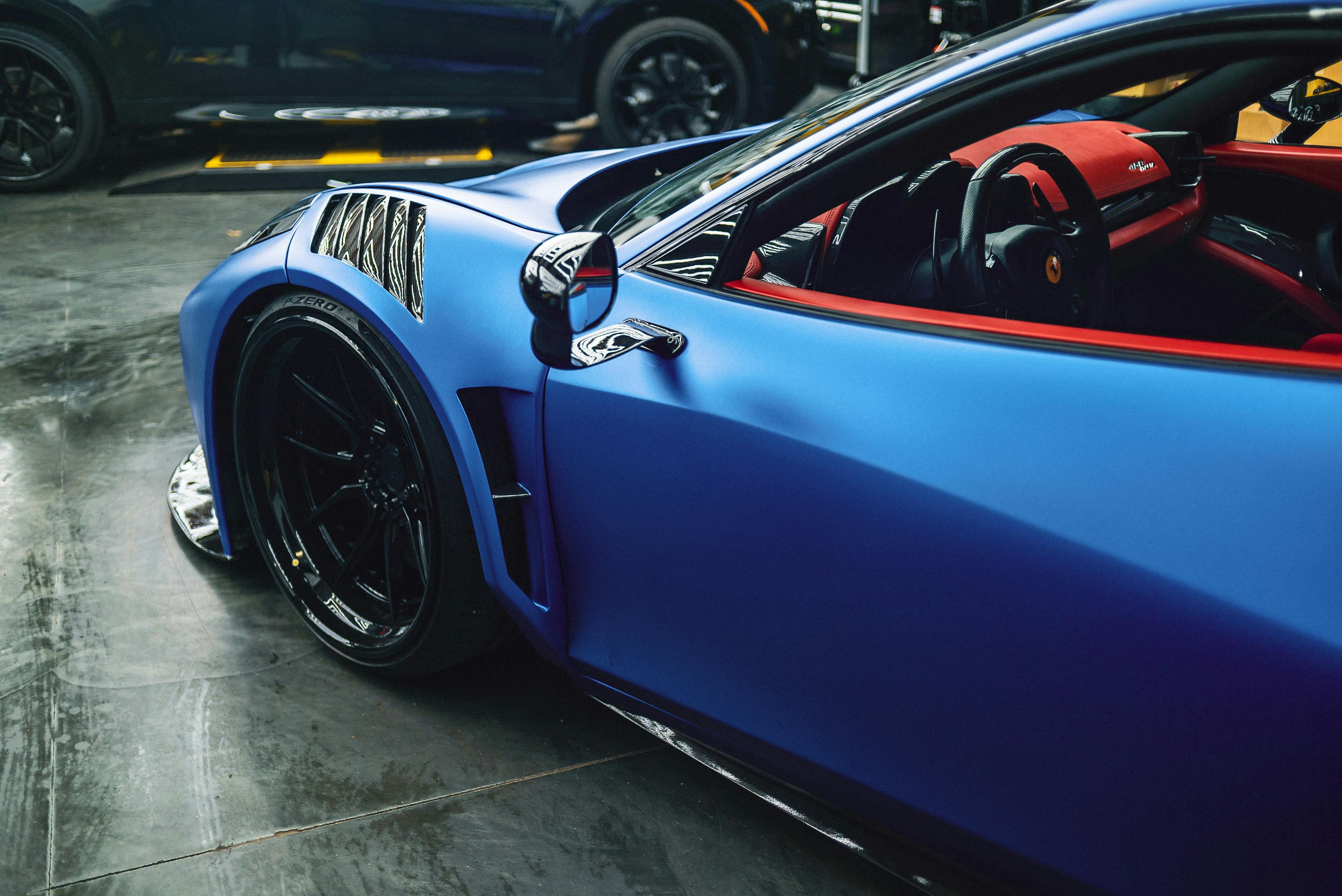
These extraordinary machines are designed to be more than just weekend toys. With advancements in technology and engineering, supercars have become more accessible for everyday use without compromising their jaw-dropping speed and performance. Imagine effortlessly merging onto highways, maneuvering through city traffic, and enjoying the thrilling acceleration that these cars are known for.
Supercars engineered for practicality boast features that make them more comfortable and convenient for daily commutes. From adjustable suspension systems that provide a smoother ride to advanced driver-assistance features that enhance safety, these cars offer a level of comfort and ease that might surprise you.
Curiosity fact: Did you know that the Porsche 911 GT2 RS, known for its blistering speed, also comes equipped with features like adaptive cruise control and a front axle lift system to navigate speed bumps and steep driveways?
Practicality extends to the interior as well. Despite their high-performance nature, these cars are designed with ergonomic seating, ample legroom, and modern infotainment systems that keep you connected and entertained on your daily journeys.
While fuel efficiency may not be the primary focus of supercars, advancements in hybrid and electric technologies have led to the emergence of high-performance hybrid models. These cars utilize a combination of internal combustion engines and electric motors to deliver impressive power while reducing emissions.
The integration of these practical features doesn't detract from the heart-pounding performance that supercars are renowned for. With mind-boggling acceleration, precise handling, and top speeds that push the boundaries of what's possible, these cars ensure that the thrill of speed is always within your grasp, whether you're commuting to work or embarking on an epic road trip.
So, if you've ever dreamed of experiencing the thrill of a supercar while seamlessly integrating it into your everyday life, these speed machines built for practicality offer a tantalizing opportunity to enjoy the best of both worlds.

Gone are the days when electric cars were solely associated with environmental consciousness and efficiency. Today, EVs are proving their mettle on the speed front, challenging traditional combustion-powered supercars. With instant torque delivery and powerful electric motors, these cutting-edge vehicles can catapult you from 0 to 60 mph in breathtakingly short times.
Curiosity fact: Did you know that the Tesla Model S Plaid, one of the fastest electric cars available, can accelerate from 0 to 60 mph in less than 2 seconds? That's quicker than many high-performance gasoline-powered sports cars!
The advancements in battery technology have paved the way for longer ranges and faster charging, making high-speed journeys in electric cars more feasible than ever before. Range anxiety is becoming a thing of the past as EVs offer extended driving ranges, allowing you to embark on thrilling road trips with confidence.
Beyond acceleration, EVs excel in handling and maneuverability, thanks to their low center of gravity achieved by placing heavy battery packs in the vehicle's floor. This weight distribution enhances stability and cornering abilities, ensuring a thrilling and exhilarating driving experience.
Furthermore, advancements in regenerative braking systems allow EVs to recapture energy during deceleration, maximizing efficiency and extending the driving range. It's a fascinating blend of performance and sustainability that makes high-speed EVs a compelling choice for speed enthusiasts who are also mindful of their ecological footprint.
As electric vehicle technology continues to evolve, we can expect even more mind-boggling speed achievements. With ongoing research and development, manufacturers are pushing the boundaries of what's possible, utilizing innovative materials, and harnessing the power of artificial intelligence to enhance performance and efficiency.
The future of high-speed performance lies in the realm of electric vehicles, where the marriage of cutting-edge technology and sustainability is revolutionizing the automotive landscape. So, buckle up and get ready to embrace a new era of speed, where electric vehicles reign supreme and electrify your driving experience like never before.

With autonomous technology, vehicles are equipped with sophisticated sensors, cameras, and artificial intelligence algorithms that enable them to navigate and make decisions without human intervention. This advanced technology not only enhances safety but also has the potential to transform the way we travel, making our journeys faster and more efficient.
Imagine a future where you can sit back, relax, and let the car take the wheel. Autonomous cars have the potential to optimize driving routes, minimize traffic congestion, and reduce accidents caused by human error. By eliminating the need for human drivers, these vehicles can communicate and coordinate with each other, creating a seamless and synchronized flow of traffic.
Curiosity fact: Did you know that autonomous vehicles have the potential to reduce traffic accidents by up to 90%? This technology has the potential to save thousands of lives and revolutionize the way we travel.
Speed and safety go hand in hand with autonomous driving. These vehicles can analyze vast amounts of data in real-time, allowing them to make split-second decisions and react to changing road conditions faster than any human driver could. With precise control and coordination, autonomous cars can potentially achieve optimal speeds while ensuring the highest level of safety for all road users.
The future possibilities are boundless. As autonomous technology continues to advance, we can expect even greater levels of speed, efficiency, and safety. Imagine a network of interconnected autonomous vehicles seamlessly navigating through cities, creating a harmonious flow of traffic that maximizes speed and minimizes delays.
It's important to note that the development and deployment of autonomous cars are accompanied by ongoing discussions and considerations regarding regulations, ethical dilemmas, and societal implications. Ensuring the safe integration of autonomous vehicles into our transportation systems is a top priority for manufacturers and regulatory bodies alike.
As we embrace this transformative technology, we are on the cusp of a new era where speed and safety converge in autonomous cars. Buckle up and get ready to witness the evolution of transportation as we know it, where autonomous vehicles redefine our perception of speed and usher in a future where roads are safer, more efficient, and seamlessly connected.

Concept cars are created by automotive manufacturers to showcase their design prowess, technological advancements, and forward-thinking ideas. These vehicles often feature striking aesthetics, futuristic interiors, and cutting-edge technologies that are not yet available in production models.
Prototypes, on the other hand, are functional vehicles built to test and refine new technologies, components, or design features. They serve as experimental platforms for manufacturers to evaluate performance, efficiency, and user experience before mass production.
Curiosity fact: Did you know that concept cars are often created to gauge public interest and gather feedback? They allow manufacturers to assess market demand and explore new design directions.
Concept cars and prototypes are not just eye-catching displays at auto shows; they serve as inspiration for future models and influence the evolution of the automotive industry. Many features and design elements first introduced in concept cars eventually find their way into production vehicles, shaping the cars we drive on a daily basis.
These vehicles often showcase innovative technologies such as advanced driver-assistance systems, electric powertrains, autonomous capabilities, and sustainable materials. They provide a glimpse into the future of mobility, where environmental considerations, connectivity, and user experience take center stage.
Automakers invest significant time and resources into creating these visionary vehicles, pushing the limits of design, performance, and functionality. By doing so, they stimulate creativity and pave the way for groundbreaking advancements that ultimately benefit the entire industry and car enthusiasts like you.
While not every concept car or prototype makes it to production, they serve as catalysts for innovation and progress. They inspire engineers, designers, and enthusiasts to push boundaries, challenge conventions, and explore new possibilities.
So keep your eyes peeled for concept cars and prototypes, as they represent the exciting forefront of automotive technology and design. They offer us tantalizing glimpses into the future, showcasing the ingenuity and imagination that fuels the automotive industry. Who knows, the features and technologies you see in today's concepts may soon become a reality in the cars of tomorrow.
Conclusion

Fastest Cars in the World: Interesting Facts
✅ The Bugatti Chiron Super Sport 300+ holds the current record for the highest top speed ever achieved by a production car, reaching an astonishing 304.77 mph (490.48 km/h). (Source: Guinness World Records)✅ The Rimac C_Two, an all-electric hypercar, accelerates from 0 to 60 mph in just 1.85 seconds, making it one of the quickest cars in the world. (Source: Rimac Automobili)
✅ The McLaren Speedtail is not only incredibly fast, with a top speed of 250 mph, but it also features a unique three-seat configuration with the driver positioned in the center, providing an exhilarating and immersive driving experience. (Source: McLaren Automotive)
✅ The Aston Martin Valkyrie boasts a mind-boggling power-to-weight ratio of 1:1, meaning it has the same amount of horsepower as its total weight in kilograms. This extraordinary ratio contributes to its exceptional performance on the road. (Source: Aston Martin)
✅ Concept cars and prototypes, such as the Lamborghini Terzo Millennio, offer a glimpse into the future of speed and technology. These visionary vehicles showcase innovative features like electric drivetrains, advanced materials, and autonomous capabilities, shaping the future of high-performance automobiles. (Source: Lamborghini)
Frequently Asked Questions
Which car holds the record for the highest top speed?
The Bugatti Chiron Super Sport 300+ currently holds the record for the highest top speed ever achieved by a production car, reaching an astonishing 304.77 mph (490.48 km/h).
What is the fastest accelerating car?
The Rimac C_Two, an all-electric hypercar, is one of the fastest accelerating cars, going from 0 to 60 mph in just 1.85 seconds.
What is the unique feature of the McLaren Speedtail?
The McLaren Speedtail features a unique three-seat configuration with the driver positioned in the center, providing an immersive and thrilling driving experience.
What is the power-to-weight ratio of the Aston Martin Valkyrie?
The Aston Martin Valkyrie boasts a power-to-weight ratio of 1:1, meaning it has the same amount of horsepower as its total weight in kilograms.
What can we expect from concept cars and prototypes?
Concept cars and prototypes provide a glimpse into the future of speed and technology, showcasing innovative features like electric drivetrains, advanced materials, and autonomous capabilities.
